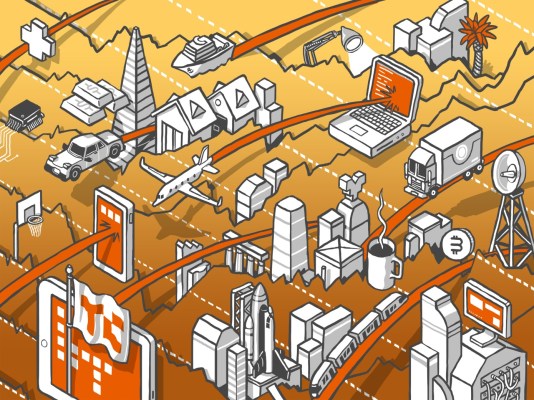As net retention plummets, AI could be the savior software companies need

New data shows that net retention at software companies has been halved in recent quarters, partially explaining the slowdown of revenue growth at tech firms.
This isn’t wholly surprising, since net retention forms a core plank of the SaaS economic model, and has been under extreme pressure, as we noted last week. This is because software companies are finding themselves trying to meet two, seemingly contradictory asks: tighten costs and stop letting growth slow too much while your existing customer base reins in spending.
The Exchange explores startups, markets and money.
Read it every morning on TechCrunch+ or get The Exchange newsletter every Saturday.
If you need a refresher: Net retention (AKA: net dollar retention and net revenue retention) is a measure of how much existing software customers spend on your product over time. The metric is normalized to 100%, which indicates that a software company’s existing customers are spending no more and no less than they did before. Net retention metrics over 100% tell us that existing customers are spending more, while anything less than 100% signifies a fall in total spending.
 Enterprise software companies are expected to enjoy net retention comfortably above 100%. The higher this metric, the better, because if you can land customers that continue to spend more on your product over time, your company not only buys revenue with sales and marketing spend, it also nets future growth. And since software revenue tends to be high-margin by nature, that boost to revenue brings with it gobs of gross profit that can offset costs.
Enterprise software companies are expected to enjoy net retention comfortably above 100%. The higher this metric, the better, because if you can land customers that continue to spend more on your product over time, your company not only buys revenue with sales and marketing spend, it also nets future growth. And since software revenue tends to be high-margin by nature, that boost to revenue brings with it gobs of gross profit that can offset costs.
In other words, declining net retention not only makes the SaaS economic model dicier than it was before, it also means software companies will find it harder to lose less money and keep expanding at the same time.
Now, to the new data. According to Altimeter investor Jamin Ball, median net retention at public SaaS companies has followed the following curve in recent quarters:
- Q1 2021-Q4 2022: Between 120% and 121%;
- Q1 2023: 116%;
- Q2 2023: 111%.
As we are more interested in how far above 100% these numbers are, this decline from 120% to 111% is not a difference of just 7.5%, but a shocking 45% fall over just two, short quarters. It appears the trend we detailed last week was not only described accurately, it was uglier than expected.
Worse, as we are discussing median net retention rates, we can assume that at least half of all public software companies were under the 111% mark. We’ll get more data as companies continue to report their quarterly results, so expect the numbers to move a little, but this does not look good.
Lower net retention, slowing growth and lots of SaaS companies still in the red. Is software really just not that good a business? I think there’s more nuance to what’s happening here.
Maybe software is too cheap
You can get a subscription to Slack for as little as $7.25 per user, per month. Sure, that’s the cheap tier, but still it’s incredibly inexpensive. You can spend more — a stonking $12.50 per month — for the next tier up, or you can get an enterprise plan like my parent company Yahoo for more features, though I presume it’s possible to negotiate a volume discount at that point.
